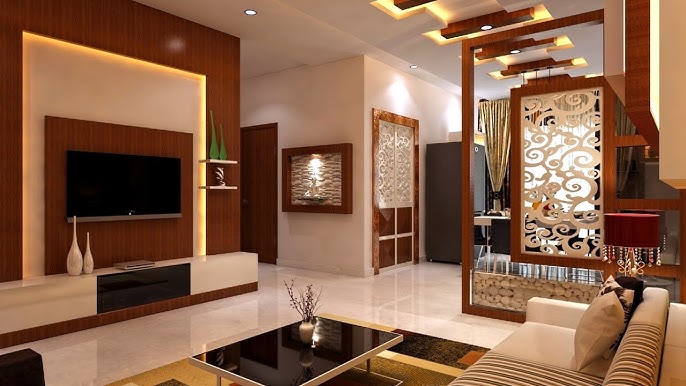Transform Your Home With Important Principles of Interior Layout and Visual Appeals
The art of changing your home via the necessary principles of interior decoration and looks needs a thoughtful strategy that integrates shade, equilibrium, and spatial recognition. By recognizing the influence of shade theory and the significance of texture and patterns, one can develop rooms that are not just aesthetically enticing yet likewise deeply personal. Achieving this equilibrium involves greater than mere decoration; it encompasses a critical setup and an eager understanding of exactly how each element interacts within a space. As we discover these fundamental ideas, consider just how they might redefine your understanding of home and individual expression.
Recognizing Color Concept
Shade theory is an essential aspect of interior decoration that significantly affects mood, assumption, and general visual. Comprehending the concepts of color theory enables designers to develop spaces that reverberate emotionally with passengers while fulfilling useful demands (miami luxury interior design). Shades can be categorized into 3 primary kinds: primary, additional, and tertiary. Each group plays an essential duty in establishing harmony within an area.
The psychological effect of shades is profound; warm shades such as reds and oranges stimulate power and heat, while amazing tones like blues and environment-friendlies advertise calmness and tranquility. The use of corresponding shades boosts aesthetic passion, developing striking contrasts that can boost a room's appeal.
Neutral colors, on the other hand, function as a versatile backdrop, enabling other style aspects to shine. It is important to think about aspects such as lights and the area's objective when picking a shade combination, as these can change the understanding of shades throughout the day.
Eventually, a well-considered color pattern can transform a space, cultivating a feeling of convenience and design that lines up with the occupants' preferences. Mastery of shade theory is, therefore, an essential ability for any interior designer aiming to create harmonious and inviting environments.
Attaining Equilibrium in Design
How can developers achieve a sense of equilibrium in their areas? Achieving balance in design is essential to developing harmonious interiors.
Unbalanced equilibrium, on the various other hand, counts on differing components that still attain a cohesive look. This technique permits for even more vibrant and informal plans, providing interest while keeping stability. By meticulously picking varying sizes, colors, and appearances, developers can produce a visually engaging room that really feels well balanced yet energised.
Radial equilibrium stresses a main centerpiece with aspects emitting exterior. This style is generally seen in round designs, where furniture and decor develop a natural surround that draws the eye inward.
Inevitably, attaining equilibrium needs thoughtful consideration of range, proportion, and the relationships in between components. interior design firms. By skillfully applying these equilibrium concepts, designers can transform spaces into atmospheres that feel both aesthetically pleasing and functionally harmonious, improving the overall experience for occupants
Relevance of Spatial Understanding

An eager sense of spatial recognition permits designers to determine centerpieces within a room, leading the customer's interest to vital functions while keeping an overall feeling of unity. It also helps in the strategic positioning of lights, which can drastically influence the assumption of area and mood. Comprehending spatial relationships enables the designer to cater to the particular demands of residents, making sure that each area offers its intended purpose without compromising visual appeals.
Ultimately, spatial understanding is essential for optimizing the capacity of any indoor area. By meticulously taking into consideration the interplay between dimensions, format, and feature, designers can produce settings that not only fulfill sensible needs yet additionally stimulate a feeling of comfort and appeal, improving the overall living experience.
Integrating Appearance and Patterns
Embracing a diverse series of textures and patterns can substantially improve the aesthetic and tactile appeal of an indoor space. The critical use different products-- such as timber, metal, fabric, and stone-- produces depth and rate of interest, making a room really feel extra welcoming and dynamic. Combining smooth surface areas with harsh appearances get more can develop a balance that attracts the eye and engages the senses.
When including patterns, consider both range and repeating. Big patterns can function as focal points, while smaller sized, subtle styles can enhance various other elements without frustrating the area. Layering patterns, such as pairing floral pillows with striped tosses, includes complexity and a feeling of consistency if executed thoughtfully.
It is likewise critical to preserve a cohesive color combination, ensuring that appearances and patterns work with each other as opposed to contend for attention. By selecting a few key appearances and patterns, you can produce an unified visual that mirrors your personal style while boosting the total setting of the room. Inevitably, the careful incorporation of these aspects can change a mundane area right into an innovative atmosphere abundant with character and warmth.
Individualizing Your Room
Producing a space that shows your personality is vital to attaining a genuinely inviting setting. Customization in interior decoration permits you to instill your unique design and rate of interests right into view it now your home, changing it from a mere sanctuary into a sanctuary that talks to who you are. Begin by picking a color scheme that reverberates with your feelings-- strong shades can stimulate, while soft tones offer tranquility.
Include artwork and design that reflect your interests, whether it be travel, nature, or abstract principles. Showing individual collections, such as publications, photos, or keepsakes, can evoke treasured memories and create prime focus within a room. Furthermore, consider personalizing practical pieces, like upholstered furniture, to straighten with your aesthetic preferences.

Conclusion
In conclusion, the improvement of a home via the essential concepts of interior decoration and looks demands an extensive understanding of color concept, balance, spatial understanding, appearance, and customization. Each element contributes considerably to producing an unified and functional living atmosphere - interior design firms. By thoughtfully integrating these principles, individuals can improve the visual charm and psychological resonance of their spaces, ultimately fostering a home that reflects distinct identities while offering convenience and practicality